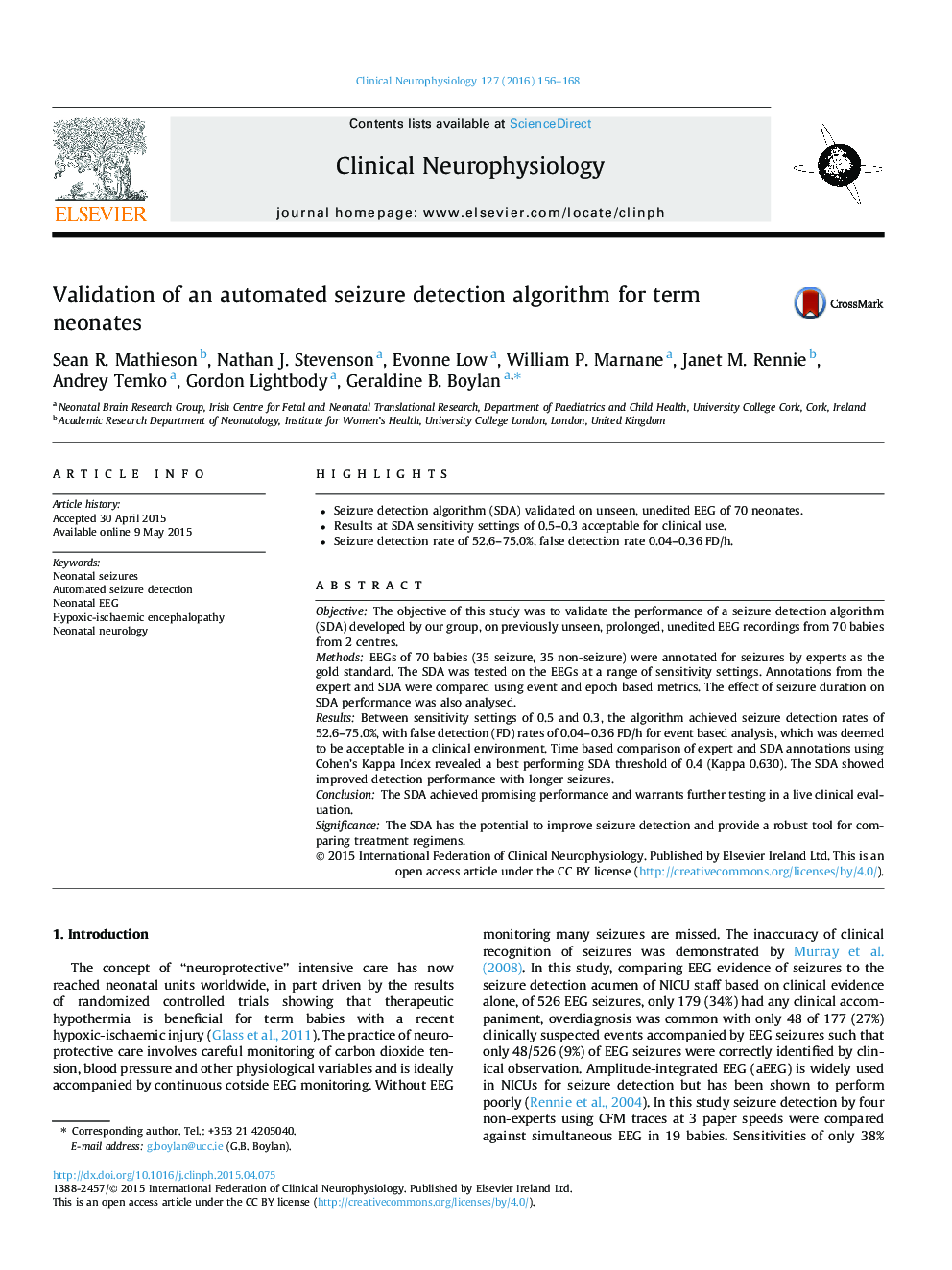| Article ID | Journal | Published Year | Pages | File Type |
|---|---|---|---|---|
| 6007847 | Clinical Neurophysiology | 2016 | 13 Pages |
â¢Seizure detection algorithm (SDA) validated on unseen, unedited EEG of 70 neonates.â¢Results at SDA sensitivity settings of 0.5-0.3 acceptable for clinical use.â¢Seizure detection rate of 52.6-75.0%, false detection rate 0.04-0.36 FD/h.
ObjectiveThe objective of this study was to validate the performance of a seizure detection algorithm (SDA) developed by our group, on previously unseen, prolonged, unedited EEG recordings from 70 babies from 2 centres.MethodsEEGs of 70 babies (35 seizure, 35 non-seizure) were annotated for seizures by experts as the gold standard. The SDA was tested on the EEGs at a range of sensitivity settings. Annotations from the expert and SDA were compared using event and epoch based metrics. The effect of seizure duration on SDA performance was also analysed.ResultsBetween sensitivity settings of 0.5 and 0.3, the algorithm achieved seizure detection rates of 52.6-75.0%, with false detection (FD) rates of 0.04-0.36Â FD/h for event based analysis, which was deemed to be acceptable in a clinical environment. Time based comparison of expert and SDA annotations using Cohen's Kappa Index revealed a best performing SDA threshold of 0.4 (Kappa 0.630). The SDA showed improved detection performance with longer seizures.ConclusionThe SDA achieved promising performance and warrants further testing in a live clinical evaluation.SignificanceThe SDA has the potential to improve seizure detection and provide a robust tool for comparing treatment regimens.
